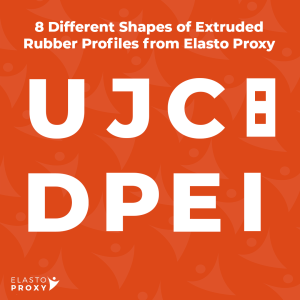Better bonded gaskets improve quality and perceptions of quality. They reduce labor costs and support sales, too.
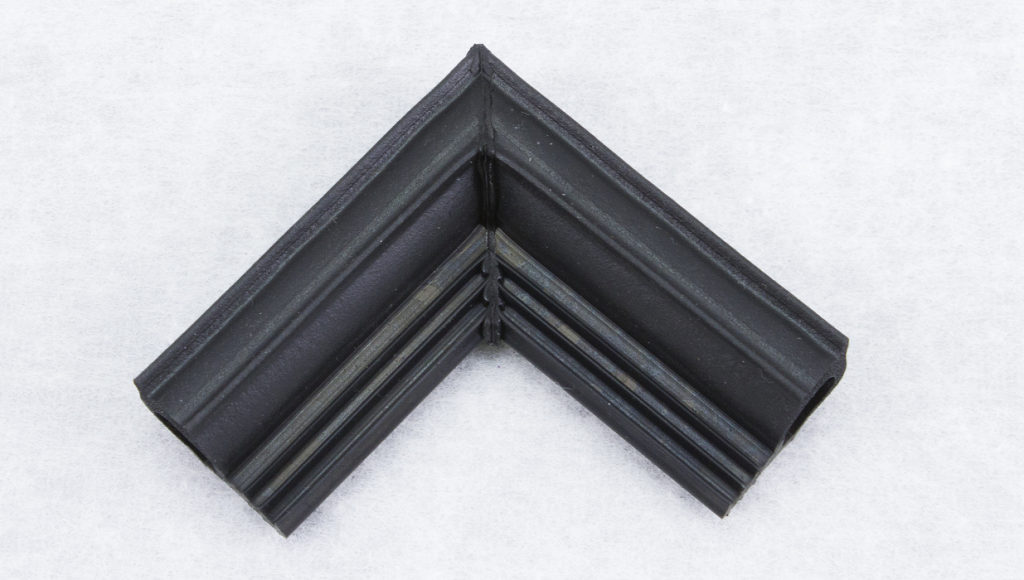
Finished gaskets need strong bonds to provide reliable sealing and insulation. In applications where rubber gaskets are visible, bonds that look better also suggest higher product quality. Buyers of specialty vehicles, commercial ovens, and electrical enclosures (just to name a few) don’t want to see bonded gaskets that look like they’re ready to pull apart in the corners or that need touch-ups.
Even in applications (such as HVAC systems) where finished gaskets are hidden, failure is expensive. Replacing the rubber seal in an air conditioning unit may cost more than you realize. In addition to paying for a replacement part, there are direct labor costs. Indirect costs including traveling to and from the job site, scaling ladders, pulling and replacing panels, and completing paperwork. Over time, it all adds up.
Gasket bonding may seem simple, but it’s skilled labor. You can buy your bonded gasket equipment, but machines don’t come with expertise. Even in an age of digital manufacturing, some activities still require craftsmanship. Plus, some bonding methods require cuts that you don’t have the equipment to make. You can try using guillotine saws or hand tools, but you can’t match water jet cutting. (more…)



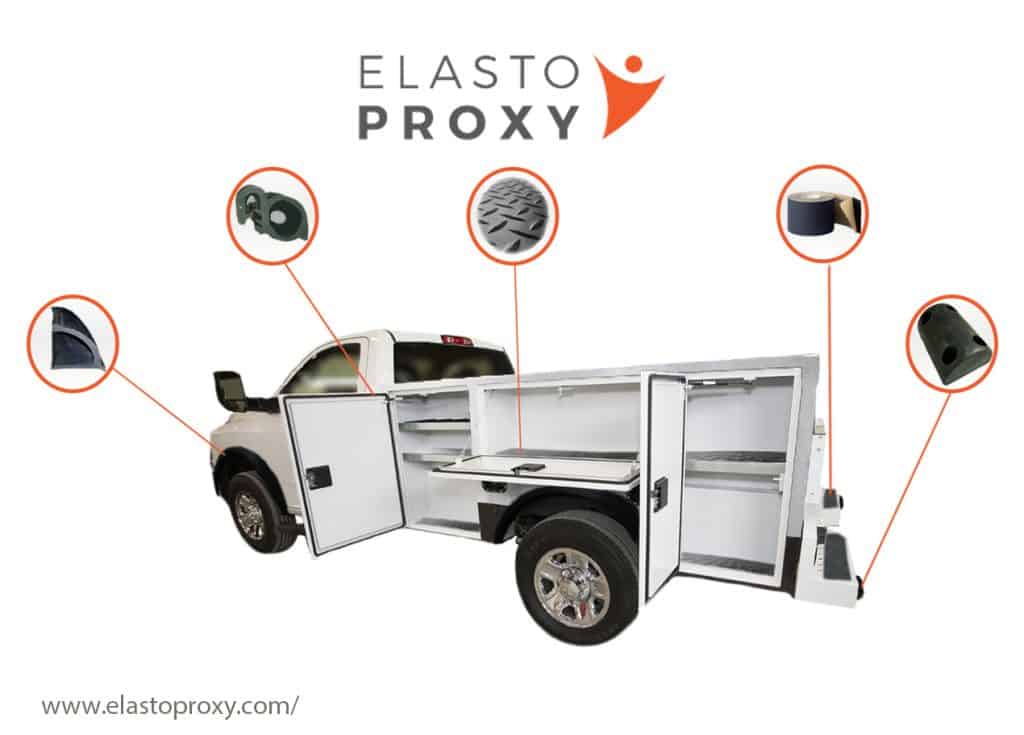
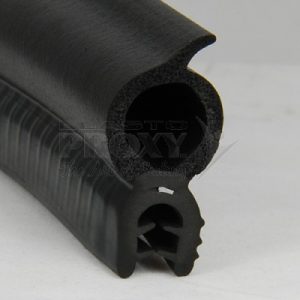 Do you need to seal rounded corners against wind, water, dust, or dirt? Bulb trim seals are industrial rubber products that provide sealing and insulation for machine doors, vehicle hatches, and equipment enclosures. They’re designed to seal rounded corners and have separate bulb and retainer sections. Each of these sections can use a different material and have a different durometer or hardness.
Do you need to seal rounded corners against wind, water, dust, or dirt? Bulb trim seals are industrial rubber products that provide sealing and insulation for machine doors, vehicle hatches, and equipment enclosures. They’re designed to seal rounded corners and have separate bulb and retainer sections. Each of these sections can use a different material and have a different durometer or hardness.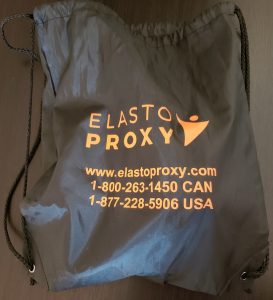 Do you need thermal, acoustic, or thermal-acoustic insulation for forestry, mining, construction, or other types of mobile equipment? Maybe you need cabin flooring or floormats instead. The Elasto Bag, a sack full of samples from Elasto Proxy, contains sealing and insulation that you can see for yourself and hold in your hands. It’s easy to request an Elasto Bag, but what’s inside when you get it?
Do you need thermal, acoustic, or thermal-acoustic insulation for forestry, mining, construction, or other types of mobile equipment? Maybe you need cabin flooring or floormats instead. The Elasto Bag, a sack full of samples from Elasto Proxy, contains sealing and insulation that you can see for yourself and hold in your hands. It’s easy to request an Elasto Bag, but what’s inside when you get it?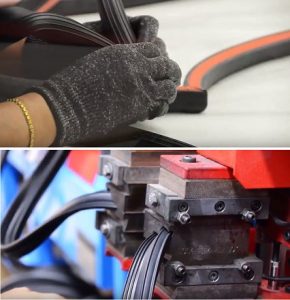 Cold bonding for finished gaskets joins cut lengths of rubber without the use of heat. This bonding technique isn’t performed under low-temperature conditions but is manual process that requires a brush and glue. By contrast, injection molding is a semi-automated process that uses a C-press machine with a heated barrel, metal plates, and tons of pressure. To join cut lengths, uncured rubber is used.
Cold bonding for finished gaskets joins cut lengths of rubber without the use of heat. This bonding technique isn’t performed under low-temperature conditions but is manual process that requires a brush and glue. By contrast, injection molding is a semi-automated process that uses a C-press machine with a heated barrel, metal plates, and tons of pressure. To join cut lengths, uncured rubber is used.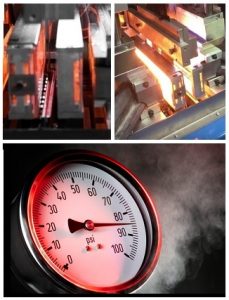 Hot splicing uses heat, pressure, and a film splice to join the ends of rubber profiles into bonded gaskets. This joining technique uses either a conventional heating source or infrared (IR) light and polyethylene (PE) film. Hot splicing creates strong bonds at the molecular level and generally provides better results than vulcanization, a bonding technique that uses uncured rubber instead of a film splice.
Hot splicing uses heat, pressure, and a film splice to join the ends of rubber profiles into bonded gaskets. This joining technique uses either a conventional heating source or infrared (IR) light and polyethylene (PE) film. Hot splicing creates strong bonds at the molecular level and generally provides better results than vulcanization, a bonding technique that uses uncured rubber instead of a film splice.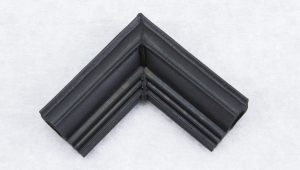 Rubber profiles come in lengths that are cut-to-size and fabricated into finished gaskets. Examples include picture frame or bezel gaskets, O-rings, and gaskets with rounded corners.
Rubber profiles come in lengths that are cut-to-size and fabricated into finished gaskets. Examples include picture frame or bezel gaskets, O-rings, and gaskets with rounded corners.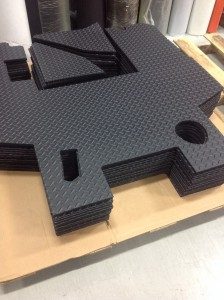 Rubber floor mats for mobile equipment protect cabin floors from damage and operators from slip-and-fall hazards. Rubber flooring that’s laminated to acoustic insulation also absorbs noise from the engine compartment, which is often directly below the cab where the operator sits. Rubber matting can even be used as a kick-plate to protect cabin walls from contact with an operator’s boots.
Rubber floor mats for mobile equipment protect cabin floors from damage and operators from slip-and-fall hazards. Rubber flooring that’s laminated to acoustic insulation also absorbs noise from the engine compartment, which is often directly below the cab where the operator sits. Rubber matting can even be used as a kick-plate to protect cabin walls from contact with an operator’s boots.